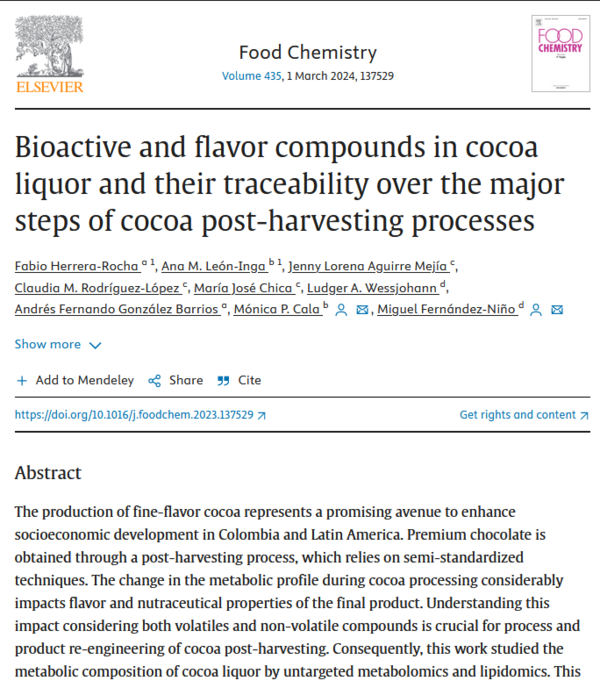The chemistry of premium chocolate.
The processing of cocoa beans into chocolate is based on complex traditional drying, fermentation and roasting steps that are not standardized and therefore difficult to reproduce. In particular, the production of fine flavor cocoa, which is characterized by special aromas and healthy ingredients, urgently requires standardization of the manufacturing processes, because premium chocolate varieties are becoming increasingly popular and consistently high quality is expected here. IPB scientists and partners from Colombia have recently analyzed the metabolic composition of cocoa liquor and established its characteristic substance profiles at specific production stages, such as drying, fermentation, and roasting. The change in constituents during the cocoa processing has a significant impact on the flavor and nutritional properties of the final product and is still underexplored. Therefore, in their inventory of cocoa liquor ingredients, the scientists also paid particular attention to those substances associated with flavor and aroma formation or with specific effects on the human organism.
As a result, they obtained a metabolic fingerprint of roasted, dried, and fermented cocoa beans that included a variety of cocoa ingredients and the frequency of their occurrence. Using the flavor database FlavorDB, which has more than 25,000 molecules listed, the Halle chemists could assign different tastes and flavors to the detected ingredients. They found 18 desired notes, for example, of vanilla, caramel, bread, jam, and potatoes, but also 19 undesired aromas, reminiscent of cabbage, radish or sweat, or with sharp or bitter taste. However, the scientists found that a large proportion of these off-flavors disappeared with further processing and were therefore hardly present in dried and roasted cocoa beans, while the desired notes tended to accumulate in the course of processing. Of all the compounds detected, however, only eleven percent had specific flavor notes listed in FlavorDB; the still largely unknown flavor space of the cocoa bean and its processing stages thus still holds much potential for further exploration. About five percent of the compounds detected were previously known as active substances, with proven antioxidant, antihypertensive, and anti-inflammatory effects. This proportion of health-promoting compounds also increases with progressive drying and roasting of the cocoa bean.
Of all the necessary processing steps, the scientists concluded, the roasting of the beans appears to have the greatest influence on the unfolding of premium flavors. With their study, the Halle scientists have laid the foundation for developing standardization procedures for fine chocolate production. The generation of specifications for the chemical composition of the cocoa liquor after each processing step is the basis for setting up automated quality controls, which can later lead to AI-controlled corrective measures in ongoing production processes.



